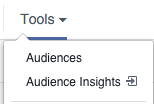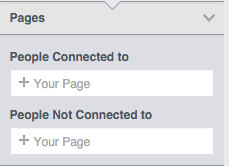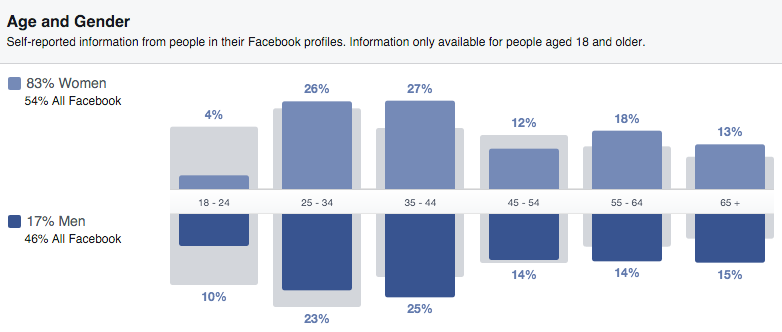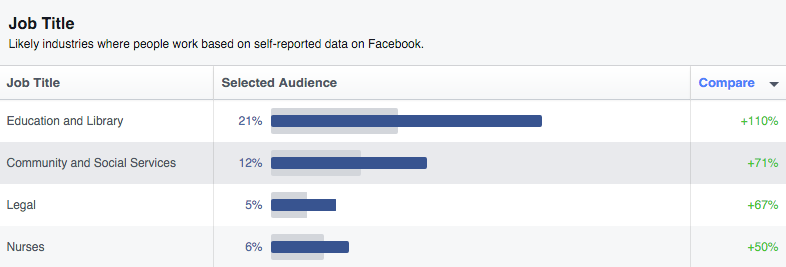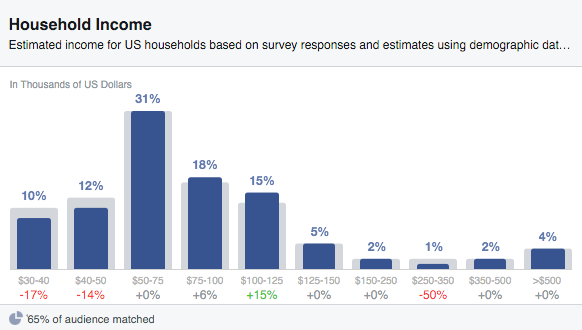Getting a better understanding of your audience and who they are is paramount to effective Facebook advertising. Yet, depending on your budget and tools, that understanding can be hard to come by.
There are effective ways to understand your audience that don’t involve breaking the bank with expensive tools or lots of time. In fact, you can use tools provided by Facebook to get a glimpse at what that audience looks like. If you’ve got a Facebook page and enough fans, you already have a starting point for potential audience research.
The tool of choice here will be Facebook’s audience insight tool, which provides a variety of demographic and behavioral information on both your page fans and any custom audiences you create. For our purposes, we’ll focus on the fans of your page as the initial step into audience research.
Getting Started
First, you need to find your way to the audience insights tool. To do this, you look for the following once logged into the Ads Manager.
Click on “Tools” and then “Audience insights” on the drop down menu and you’ll be ready to dive into data.
From here you simply select your page in the area shown below and Facebook will populate what data it has on your fans. If you have less than a thousand fans you won’t be able to see any data. If that’s the case you’ll to need to attract more fans for this tool to be useful.
Now you can look at different types of demographic information about what your fans look like. Not only can you look at typical demographic information like age, income, and education, but you can see other features like job title, top pages they’ve liked, purchase behavior, and activity on Facebook (the number of shares, likes, and comments). Always remember that you’ll see the overall sum of behaviors, not any individual user’s behavior.
Let’s look at some examples.
Age and gender are two of the most basic demographic variables that marketers target and the insights tool clearly lays this out. Below we can see that a little over 50% of the fans of this specific page are between the ages of 25 and 44 and overwhelmingly female.
Moving to the job title graph allows us to see the jobs and industries the fans are in based upon what they’ve reported in their profiles. Using the graph below we can see that a third of the audience is found in the education and library or the community and social services field.
Looking next to the income graph we can see that the fans typically fall below the $125k annual salary mark and nearly a third of them fall between $50-75k.
What have we learned from the three graphs above that helps us understand our fans and potential audiences on Facebook for advertising?
We learned:
- Over half the fans fall between the ages of 25-44.
- They are overwhelmingly female.
- A third of them work in the education and library or community and social services field.
- Nearly two thirds fall between $50k and $125k in annual income.
So how is this helpful to you and your potential advertising efforts on Facebook?
It’s a starting point.
These basic insights give you a starting point on what an audience of people who’ve liked your page look like on Facebook. If you’re struggling to come up with insights on your fans, customers, and clients outside of Facebook, this can be a good first insight into what they might look like.
Provides Some Targeting Variables
At the very least this information gives you ways in which you might start targeting people on Facebook who could be interested in your product or service. Using the four pieces of information mentioned above we’ve already got some basic audience variables Facebook will let you target and at least a few audience tests you could run right from the start.
It Didn’t Require Much Effort
The audience insights tool provides basic insight into your potential audience with little investment beyond signing up for an ad account and having a company page on Facebook. If you already have those things, it’s a great resource for beginning audience research.
Some Things To Keep In Mind
Fans don’t always equate to customers. Sometimes people simply like your page because they’re interested, but may have never purchased. See examining your fans as a first step, but not the final step in audience research.
Second, Facebook uses third party data for some of the insights it presents and sometimes it doesn’t match up well with Facebook’s own data. Facebook will provide a percentage of how much of the third party data it matched to your audience to come up with the information it provides. You’ll want to make a determination on whether that percentage is enough to make the data presented useful. We’ve seen it as low as 15% and as high as 95%.
Finally, it’s best practice to cross reference data with other sources. If you have Google Analytics (or other tools) you can reference its insights about your audience with your Facebook insights to compare similarities and discrepancies. Then you’ll be able to make a better determination of which information is more trustworthy.
Conclusion
Using audience insights and your existing Facebook fans is a great way to get your feet wet with targeting. It doesn’t take any code on your website or specially set up audiences to start getting these insights. People have already done the legwork by liking your page, so don’t let this resource go to waste.



